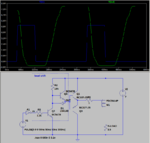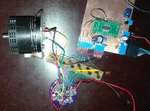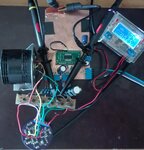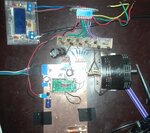righteous
Full Member level 2
Gents,
I made a homebrew level shifter, in the LTSpice simulation it looks ok, but in reality it looks completely different, actually it sucks big time. I wanted it to shift 5v to 7v, but first of all it pulls input down 1.5v and output becomes 10v, even though I only have 7v supply.

And this is the scope shot of IN and OUT (of the level shifter)

Channel 2 (pink) being the digital input.
Any suggestions would be highly appreciated.
I made a homebrew level shifter, in the LTSpice simulation it looks ok, but in reality it looks completely different, actually it sucks big time. I wanted it to shift 5v to 7v, but first of all it pulls input down 1.5v and output becomes 10v, even though I only have 7v supply.

And this is the scope shot of IN and OUT (of the level shifter)

Channel 2 (pink) being the digital input.
Any suggestions would be highly appreciated.




